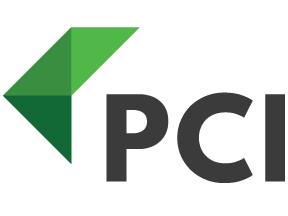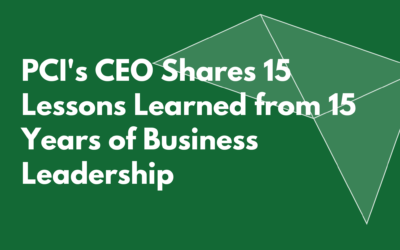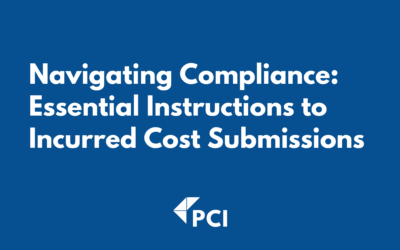In 2009, I started Premier Consulting & Integration, LLC (PCI) with three months of pay saved to start the business and six months’ worth saved for bills. After creating a name, registering PCI, ordering a “work laptop” (shout out to Dell, I still have that $350 thing and it is still kicking), ordering business cards, and building a webpage I happily, and most importantly, had some cash leftover for a bit of business development.
Fast forward three years, I had my first three employees, and I knew the next step – create infrastructure. My fears were simple:
- How much can I pay these people?
- What benefits can I give them?
- What’s left to run the business?
While early on, the bank statement is a good indicator, once you are growing and payroll is a thing (W2 or 1099), cash flow is not always what it appears to be, and truthfully, it still may not tell me exactly what is worth my time to pursue.
I always say, “When you have money to spend, things are expensive, but you can afford them. When you start a business, you know what needs to be done and things are less expensive, but you don’t have any money.” I also noticed that the day I started the business, it seemed that people came out of the woodwork with suggestions on how to spend my money… they actually thought I had some.
Going through this all, I realized that it’s hard to determine what you really need to spend money on. And, once you know, picking the right things is just as difficult.
I’m telling you all of this because I want to talk a bit about what I think is important, and how to best to prepare, so the day you are ready for your first employee or contract, you have the tools required to successfully build your infrastructure.
Starting & Growing Your Small Business 101
Webinar | October 4, 2018, 11 a.m. ET
Click Here to Register Now
Infrastructure Basics
First, your goal is to get yourself billable, meaning, your bill rate needs to encompass the cost of:
- Computers
- Website
- Insurance
- A few days off… if you’re lucky.
In the beginning, calculating bill rates are easy because you know what level of compensation your customer will tolerate, and you can make it work from there. However, once you have employees, more information is needed and, every employee hired needs to pay you a fraction of the rate. Over time this will:
- Get you out of the billable job you’re in
- Allow you to work on your business instead of in it
The Execution
Once you’ve cleared the hurdle of factoring employees into bill rates, it’s important to understand the rules of engagement and the structure within which those rules are applied in order to figure out your budget.
Rules of Engagement
A large portion of government contracting opportunities live in the Defense Contract Audit Agency (DCAA) world. The DCAA has a site filled with helpful information for contractors. Don’t pay someone for this free data.
Generally, the government will pay for most of your business costs as part of your “rates.” I use what I call the “Dad Test” to determine if something is allowed to be in this bucket of business costs. My dad, Martin Sr., is a traditional man with a very practical approach to life. If you are not sure if the DCAA would allow a cost, imagine asking Martin Sr. if you can buy something, if he gives you “the look,” it’s more than likely not going to be included in your billable rates. For example, parties, alcohol, sports tickets, fancy cars, boats, and vacations all fall in the bucket of things that you may want, but don’t expect to get paid back for them. They are considered “uses” of profit.
Now that you have an idea of what you can’t buy, there are many things you can, and in fact should. These must-have costs fall into three buckets: fringe expenses, billable employee costs and corporate costs.
Fringe expenses range from employer payroll taxes and paid time off (PTO), to medical insurance. Basically, all employee benefits and payroll taxes. These are the costs that every employee will require you to incur; the “richer” or more competitive your benefits packages become, the more you will need to bill your customer to recover the costs. Historically, people using cash-based accounting neglect to take their PTO policy and holiday leave into consideration, resulting in as much as a 10% reduction in profitability once it is recalculated.
Overhead expenses are the most misunderstood of all the expense categories. Within government accounting and DCAA compliance, overhead expenses associated with billable projects are the costs for doing business, but they are not billable. A laptop, for example, is needed by your employee to do work, but is not provided by the customer or allowed to be billed back on your contract. This would be covered by your overhead cost budget.
General and administrative expenses are used to cover your corporate operating expenses. These include your website, email, maybe a small corporate office, and most importantly, over time that is, YOUR salary. What you want as an owner is to eventually not have to bill your customers to make money. Eventually, your pay should be a derivative of all your employee’s billable time.
The Structure
Start estimating your costs with a special spreadsheet that I have designed to simplify the determination process. Simply shoot me an email, and I will send you one, no strings attached! You will need to estimate all your billable and indirect costs discussed above, these numbers will answer questions like:
- How much can I pay people per hour?
- What types of benefits can we afford to give?
- What should our PTO policy be?
- Can we afford to buy everyone a new laptop when they start, what about an iPad?
- Do we have the money to open a facility?
- How many hours do I as on owner still need to bill?
- Can we afford a business development person?
YOUR TURN!
Now that you see how a little infrastructure can go a long way, I promise you will get more sleep at night. It’s amazing how knowing what you have room to buy and what would be considered “re-investment” in the business, not to mention really knowing where you stand today, can make the possibility of a new task award much less stressful.
Want some more tips on setting up an infrastructure successfully, reserve your spot for the webinar Starting and Growing Your Small Business 101, October 4, 2018, at 11 a.m. ET. I will discuss the ups and downs of starting my own government business.
Also, keep an eye out for a future blog post where I will discuss how to compare those estimates to your actual costs.
By: PCI Founder, Martin McGann III




